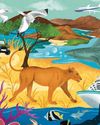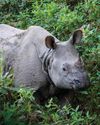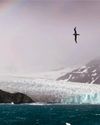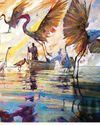
I WAS HALFWAY THROUGH MY DINNER WHEN THE expedition leader announced that our ship was surrounded by a pod of killer whales. Rushing out onto the observation deck, I watched as velvet ribbons of black and white rippled through the frigid waters of the Antarctic Ocean in pursuit of a solitary fur seal, leading it on a deathly dance around the vessel where more orcas waited in ambush. It was a breathless scene that could have been plucked straight from an episode of Frozen Planet.
But I was sharing this moment not with a hardened BBC film crew but with CEOs, stockbrokers and a semi-retired schoolteacher, aboard the Sylvia Earle.
It’s a sign that cruise tourism in Antarctica is a booming business and that more people than ever are experiencing the pull of our planet’s final, frozen frontier. According to the International Association of Antarctica Tour Operators (IAATO), my companions and I were joined by more than 100,000 others on the ice during the 2022-23 season (October to March). It’s a significant increase from the highest previous figure of 75,000 during the 2019-2020 season, and it’s reignited the debate about the sustainability and ethics of these tourist expeditions in the world’s most fragile ecosystem. But while it’s important to emphasise the environmental impact of the industry, there’s a growing sense that tourism, if managed sustainably, can actually make a positive contribution to conservation in Antarctica and beyond.
Denne historien er fra December 2023-utgaven av BBC Wildlife.
Start din 7-dagers gratis prøveperiode på Magzter GOLD for å få tilgang til tusenvis av utvalgte premiumhistorier og 9000+ magasiner og aviser.
Allerede abonnent ? Logg på
Denne historien er fra December 2023-utgaven av BBC Wildlife.
Start din 7-dagers gratis prøveperiode på Magzter GOLD for å få tilgang til tusenvis av utvalgte premiumhistorier og 9000+ magasiner og aviser.
Allerede abonnent? Logg på

Jump Around - Bagheera Kiplingi - The acrobatic spider with a predilection for veggie food
Spiders eat flies, right? everyone knows that the 45,000 or so spiders in the world are all obligate carnivores, more or less – eating other animals, mainly invertebrates. Nature, however, loves an exception, and one particular spider missed out on that ecological memo. It goes by the wonderful scientific name of Bagheera kiplingi, and its claim to fame is that its diet is – at least mostly – vegetarian.

Female of the Species - Zebras - A strong sisterhood is key to staying safe
Zebras are masters of confusion. Their collective noun is ‘a dazzle’, which is fitting since their bodies and behaviour have been surprising scientists for centuries.

See It, Save It? - Wildlife tourism can be a powerful ally in protecting nature - but it can also harm it. We weigh up the pros and cons.
The sums of wildlife travel aren’t as simple as more tourists equals happier nature. How much did my visit really contribute to the conservation of Lady Liuwa and her habitat – and was that outweighed by carbon emissions from my flights? Did my presence disturb the animals’ natural behaviour more than it reduced the threat of poaching or benefited local communities?The question of whether wildlife travel is, on balance, good for wildlife is a complex one – and there’s no simple answer.

Can Your Really Offset Emissions? - Planning an overseas wildlife-watching trip entails facing some inconvenient truths
Imagine (or maybe you don't need to) that you hanker after the safari trip of a lifetime in sub-Saharan Africa. A 17-day tour beginning at the iconic Victoria Falls, passing through Zimbabwe, Zambia, Malawi and Tanzania, taking in some of the continent’s most wildlife-rich national parks, and ending on the lush island of Zanzibar.

Metamorphosis: a life-changing event
WITH EVOLUTIONARY BIOLOGIST JV CHAMARY

New series for BBC One: Asia
Settle in this autumn for a new natural-history extravaganza on BBC One and iPlayer: the longawaited Asia, presented by Sir David Attenborough.

Loss of Antarctic sea ice could impact seabird food supply
Albatrosses and petrels may be forced to fly further to feed

Tarsiers in trouble
Urgent action is needed to ensure survival of the Yoda-like primate

SNAP-CHAT
Chien Lee on shrew loos, rogue drones and being rained out of bed

VISIONS OF NATURE
The winners of the Wildlife Artist of the Year competition 2024, from David Shepherd Wildlife Foundation